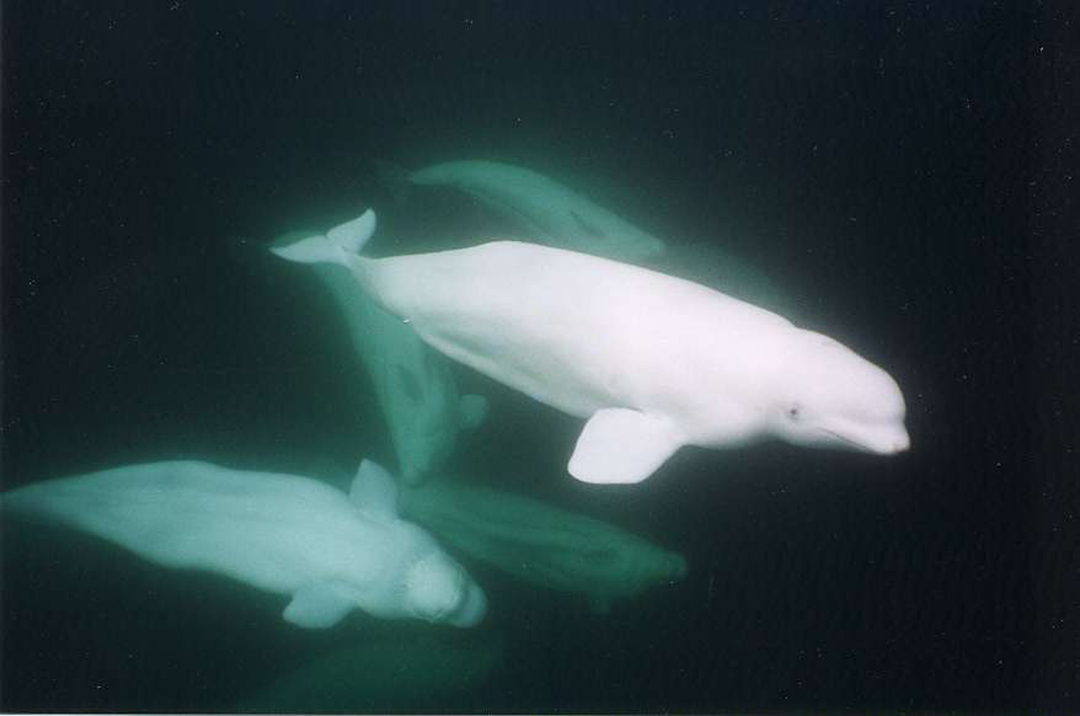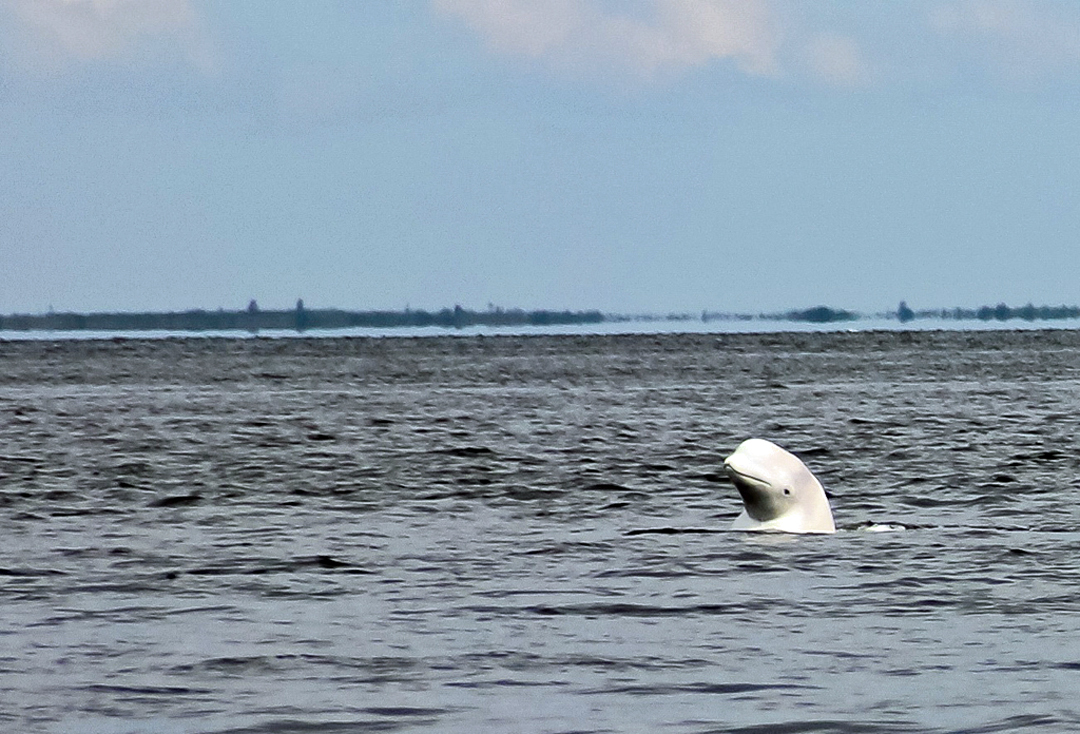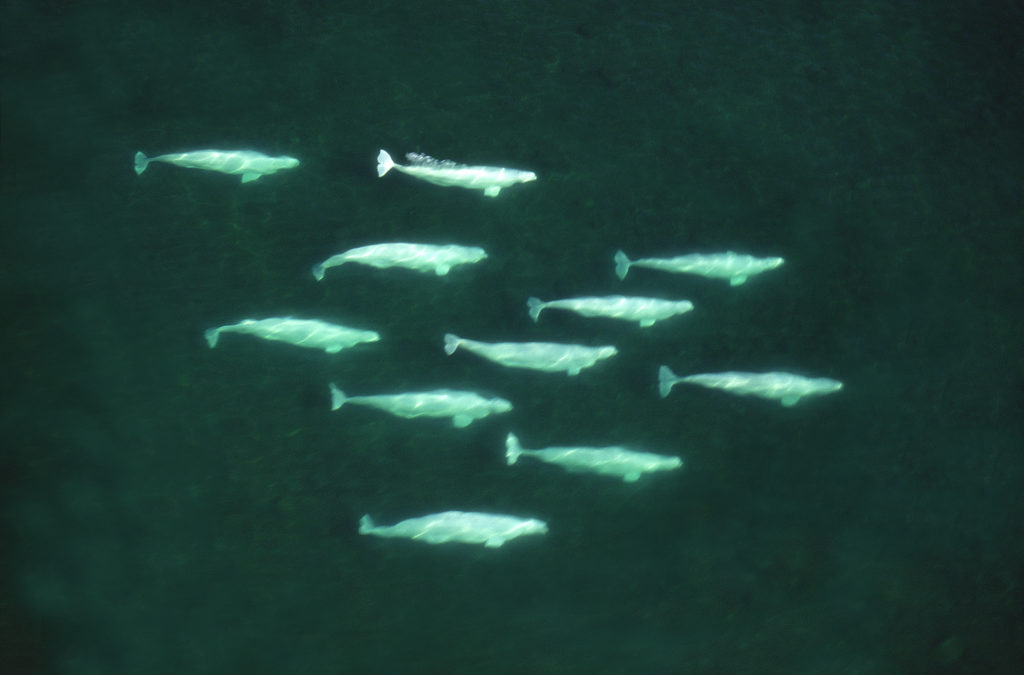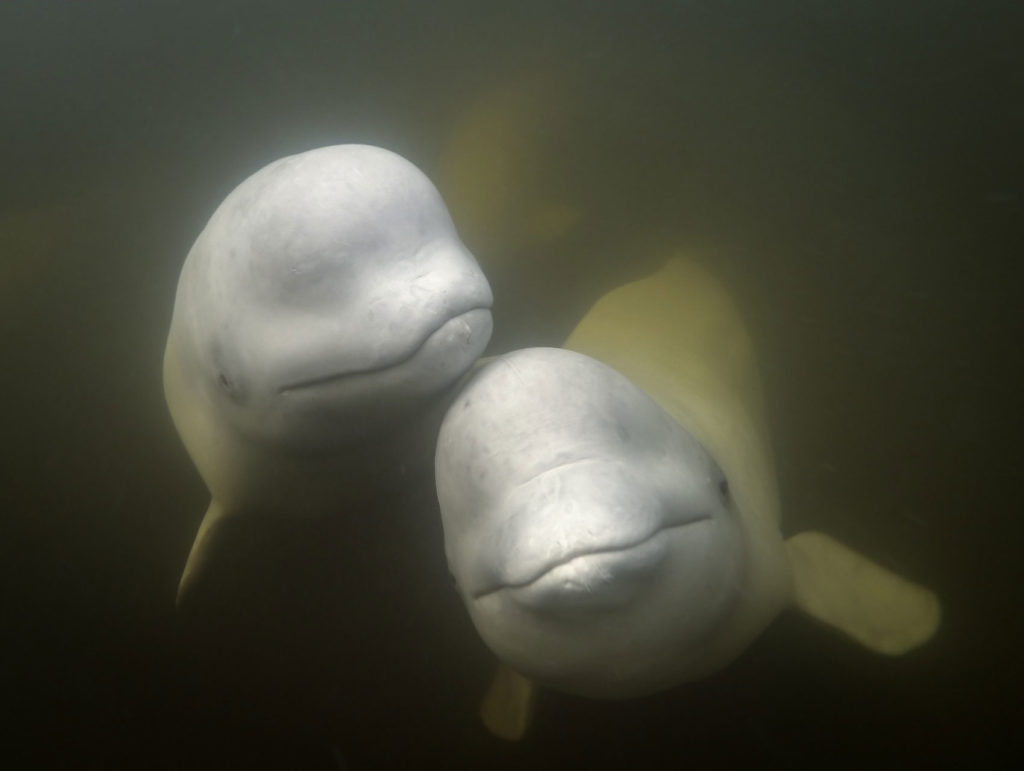Beluga whale viewing is always a highlight for guests on our Birds, Bears and Belugas, Summer Dual Lodge and Arctic Discovery safaris. Their white skin reflects the blues and greens of Hudson Bay and can be seen from hundreds of feet above, giving them an ethereal appearance. Beluga whales are the only member of the genus Delphinapterus and one of two members of the family Monodontidae, along with the “unicorns of the seas” otherwise known as narwhals.
Belugas can produce a series of chirps, clicks, whistles and squeals, which give the beluga its other name, “the canary of the sea.” They may sound like music or even nonsense to us, but to fellow belugas, they convey important information.
The hearing range of beluga whales is far greater than that of a human. Our hearing range is 0.02 to 20 kHz, whereas belugas can hear from 1.2 to 120 kHz (SeaWorld Parks & Entertainment). A mosquito buzz has a frequency of 17.4 kHz, which is at the top end of our register. Another example is a dog whistle, which we already know we can’t hear because it has a frequency that ranges from 23 to 54 kHz.
Now just imagine all the different sounds a beluga is hearing! One group of sounds they hear for sure are the squeaks from our rubber Zodiac boats. They seem to be attracted by these squeaks (along with our usually out-of-key singing), and they often come by to say hello.
Beluga whales have excellent eyesight in and out of the water. If you think they’re looking at you, they probably are! Occasionally they’ll bring their babies by and push them to the surface so they can see a human for the first time. The babies stay greyish brown for two years, which is about the same amount of time they are nursing. Gestation is around 12-15 months and they give birth every three years or so (Whale Facts, 2020). Interestingly, guests are often sharing a first-time viewing experience with baby belugas.
During the winter, belugas in the Arctic often pass through water that can reach temperatures as low as 0°C (32°F). Yes, that’s freezing! The western Hudson Bay population spends its summers around the mouth of the Churchill, Seal, and Nelson rivers and when the rivers begin to freeze, they move up to the Hudson Strait to wait out the winter in areas where they can avoid getting trapped in the ice.
There are many aspects of beluga whales that make them interesting to the world.
Did You Know?
- Belugas have no dorsal fin, which allows them to swim under the ice easily.
- Female belugas experience menopause and are one of only five species that do.
- Beluga whales are super chatty and are well known as the Canaries of the Sea.
- Belugas blow different bubbles depending on their mood (Canisius College, 2015).
- Belugas can turn their heads because the vertebrae in their neck are not fused.
- Gestation is around 12-15 months and they give birth approximately every three years.
Ready For Adventure?
Churchill Wild has something for everyone, and you’ll enjoy this one-of-a-kind experience in Canada’s Arctic.
Written by Allison Francoeur












